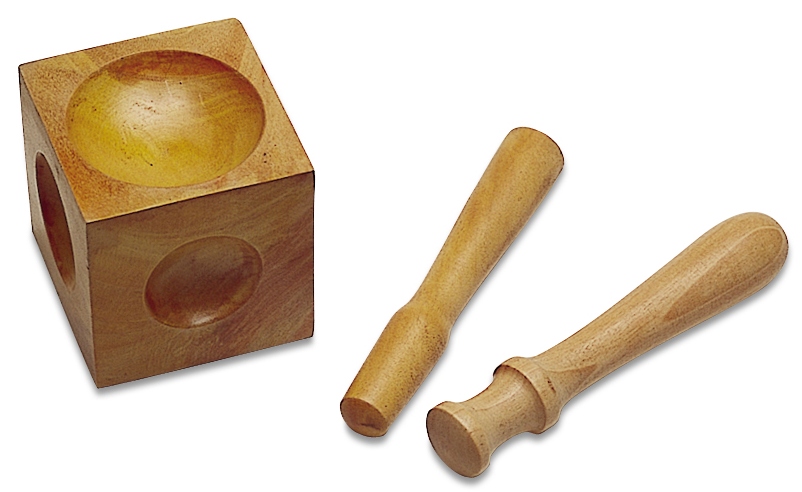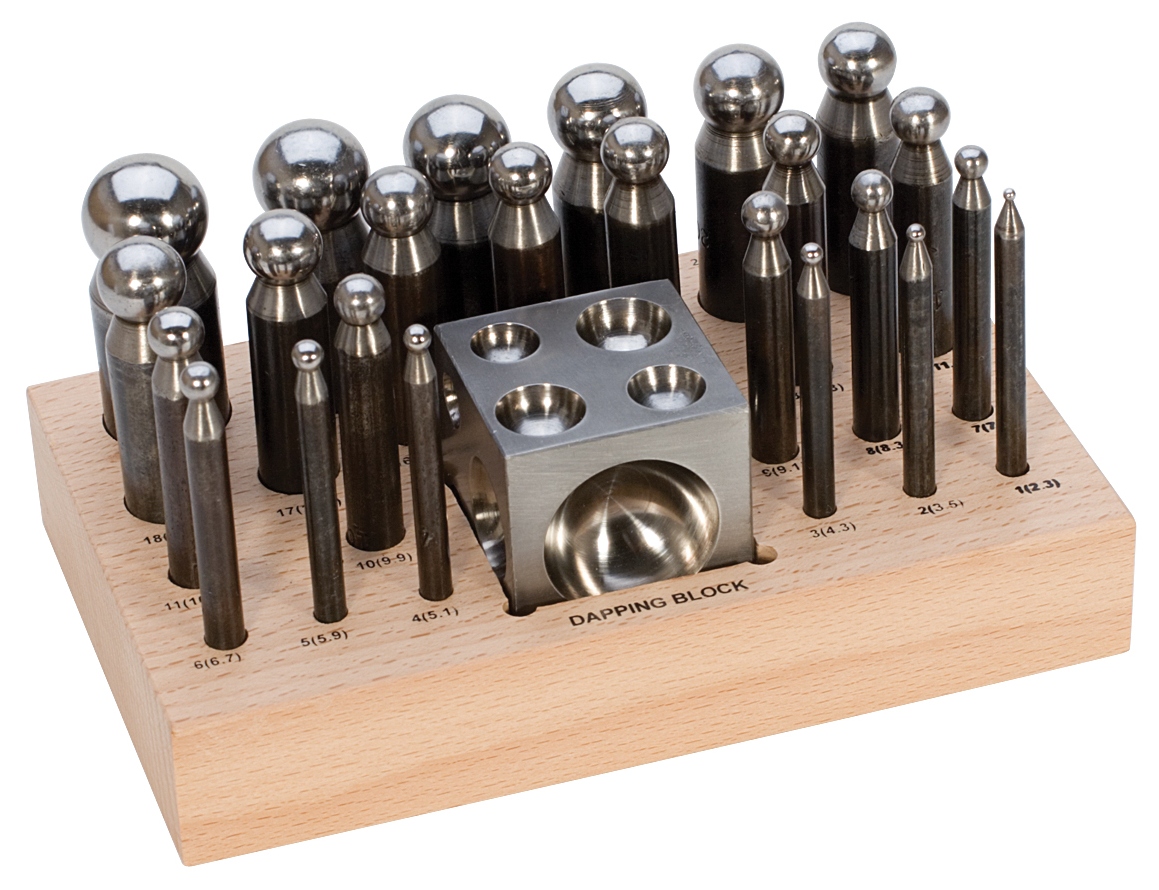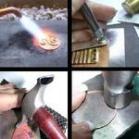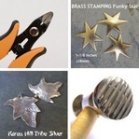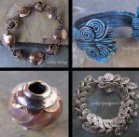Dapping Metal or Wood
by Deb Mae
(Dearborn Heights, MI)
Hi Stacy, Can you give me some beginner info on a dapping block wood vs metal. How to judge which size on the block to use. Thanks I appreciate any guidance here.
Deb Mae
Stacy's Answer:
Hi Deb Mae!Both tools are important bench tools and I use them frequently. They are both for doming metal, more specifically round discs, but you get a different look with each one. Here are some differences between the two, plus some advice on how to use them.
Basically, dapping cubes are created from high-grade hardened steel and sometimes wood. Designed with hemispherical depressions or dies in varying sizes to give a curve to flat soft metal discs as seen in bead-caps.
The wooden dapping cubes do not have as many choices in the size of dimples to choose from (6 being average). They are also usually more shallow than their metal counterparts. Because wood is soft, it will not mar or damage the design you've added to the disc as you dome it. As long as the disc is pattern-side down, you can hit it using either the round part of a chasing or ball pein hammer, a steel dap or one of the wooden ones they usually come with. If you are needing to make the disc concave with the pattern on the inside, then you would place the disc pattern-side face-up. Using the wooden dap to shape the disc will not distort your texture pattern.
The wooden cubes put a nice gentle dome on a disc. I tend to use the largest dimple because sometimes discs can get stuck in the smaller dimples. You can dig them out, but it's rather a pain. :-) Wooden cubes are very inexpensive and come in a variety of sizes from very large to the standard 2-3 inch cube and even flat-ish rectangles sporting several different dimples.
The metal doming blocks have more dimples - 18 being standard. The metal dimples are much deeper than the wooden ones creating a more dramatic arch to the disc. They are great for forming bead caps and lentils, "pods" for earrings and necklaces, etc. Because hitting steel-to-steel will damage any design you may have in the disc, you must place a thin, soft protective barrier between the disc and the dimple. They are available in steel and bronze.
Steel dapping mandrels or punches to go with the steel cubes can be purchased together with a cube as a set or separately and vary greatly in price. The punches are used with a dapping block to press the metal into a spherical shape. Sizes correspond with the depressions in the dapping block. The thickness or gauge of the metal determines which punch and die set you should use. Thinner gauges or sheet use a punch and die with similar diameters for a close fit. Thicker gauge metals require a larger die and a smaller punch to compensate for the metal thickness.
Metal thickness determines the punch and die size you should use to form sheet metal. For thin-gauge metals, a punch and die with similar diameters work best together for a close fit.
Thicker-gauge metals require a larger die and a smaller punch to compensate for the metal thickness.
When doming, work the metal into shape slowly. Starting with a larger or more shallow die and working your way down to the size you wish to end up with. Don't try to complete the dome in one step unless you need a very shallow curvature.
I prefer to use a brass dead-blow style mallet to strike the metal daps. Provides a soft dead weight that reduces bounce. Used for stamping, dapping and chasing and for hammering with disc cutters. You can safely deliver a good thwack to the daps when doming discs with a steel block without fear of damaging one of your good hammers.
Comments for Dapping Metal or Wood
|
||
|
||
|
||
|
||
|
||
|
Click here to add your own comments Join in and write your own page! It's easy to do. How? Simply click here to return to Jewelry Q & A. |
